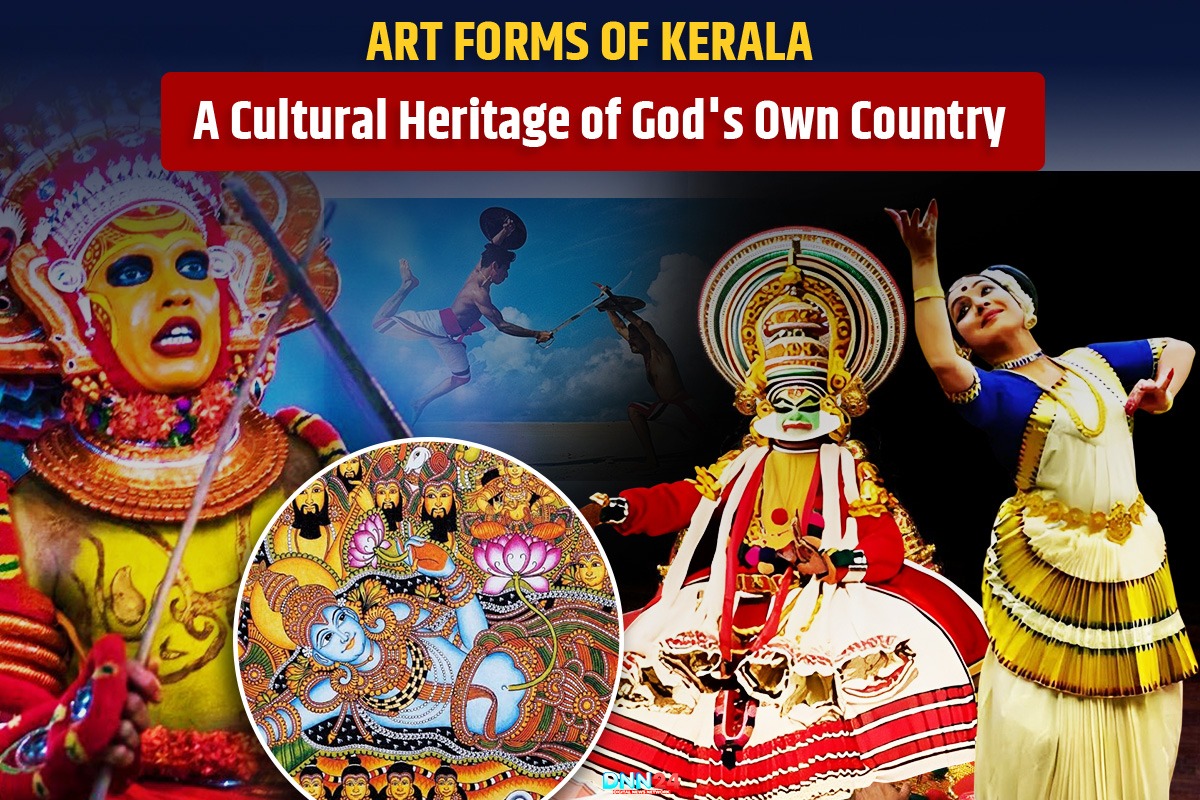Kerala, known as “God’s Own Country,” is famous for its rich cultural heritage and diverse art forms that have evolved over centuries. The various performing arts in Kerala maintain a strong relationship to the traditions and beliefs alongside historical narratives of southern Indian culture. The cultural traditions of Kerala encompass various types of Indian art including Kathakali and Mohiniyattam dance forms and Theyam and Patayani rituals as well as Kalaripayattu martial arts practice and traditional mural painting art.
Each art expression within Kerala presents unique distinct characteristics combined with specific techniques that play critical cultural roles in the life of Kerala people. The diverse art traditions have survived throughout extensive periods to shape the cultural identity of Kerala. Today, they stand as proof of the rich cultural heritage of this region. This article explores the various art forms of Kerala, how they started, what makes them special, and why they are important in the cultural landscape of Kerala.
Kathakali: The Story Play
Kathakali, meaning “story play” in Malayalam, is a renowned classical dance form from Kerala that emerged in the 17th century. Kathakali exists as a theatrical format that interweaves dance together with drama and music to stage stories mainly drawn from Hindu classics Ramayana and Mahabharata.
Distinguished by its elaborate costumes and intricate makeup called “chutti,” Kathakali uses color symbolism to define characters: green for noble figures, red for villains, and black for hunters and forest dwellers. It takes extensive time for performers to finish the application since they need to attach elaborate headwear and accessories.
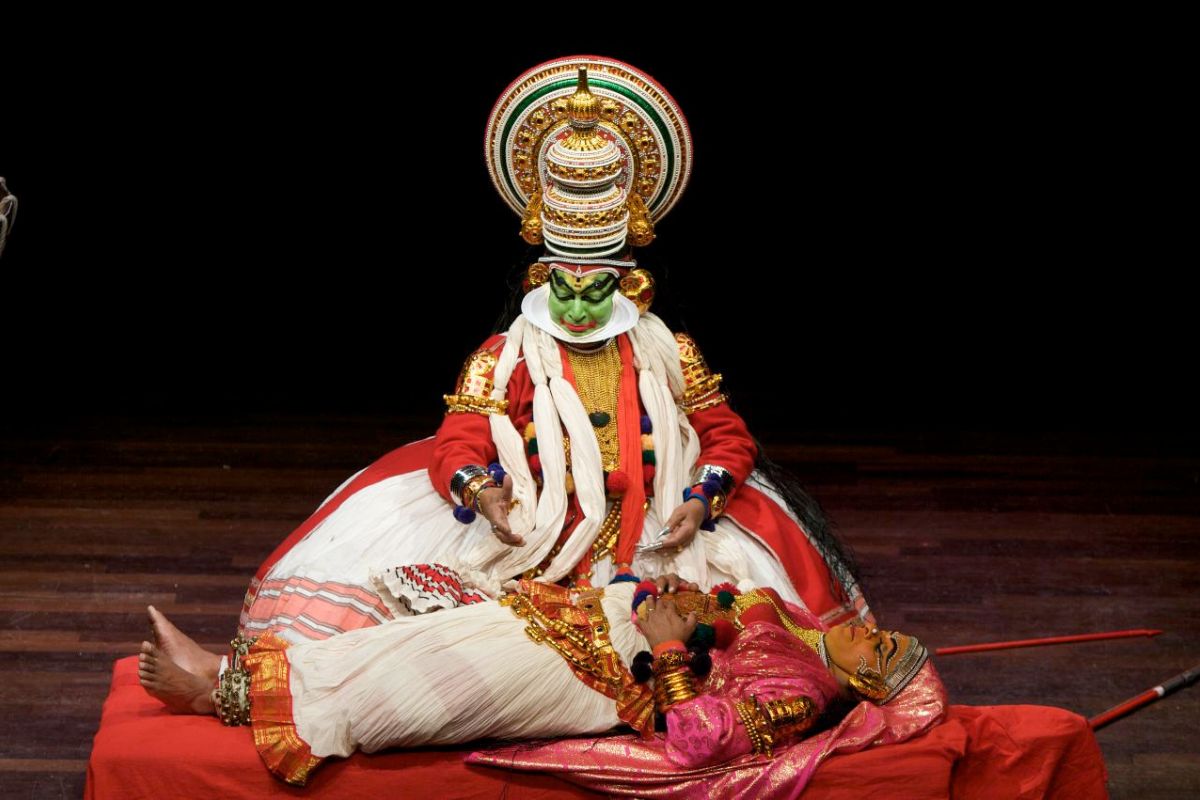
Visual storytelling in this performance art depends on particular hand positions (mudras), facial expressions (navarasas) along with body movements to express both stories and emotions. Kathakali performers need to dedicate numerous years of disciplined training to develop their body’s ability to use facial muscles and control their eye movements.
A concert takes shape through performance music created by singers and through musical instruments including the chenda drums and maddalam cymbals which establish framework and beat within the show.
Historically Kathakali ran its course across nighttime until sunrise but now contemporary shows tend to run fewer than several hours. Throughout colonial rule Kathakali managed to prevail until it gained international acclaim and institutions such as Kerala Kalamandalam dedicated themselves to preserving this captivating theatrical form.
Mohiniyattam: The Dance of the Enchantress
Mohiniyattam, meaning “dance of the enchantress,” is a classical dance form from Kerala primarily performed by women. The dance style takes inspiration from palm trees and flowing rivers of Kerala whichointments its movements with elegance through fluid body gestures.
According to Hindu mythological narratives Mohiniyattam finds its inspiration through the female manifestation of Lord Vishnu known as Mohini who derived power from enchanting demonic entities to recover the life-giving potion. During the Chera dynasty rule between 9th-12th century CE Devadasis (temple dancers) exhibited this dance.
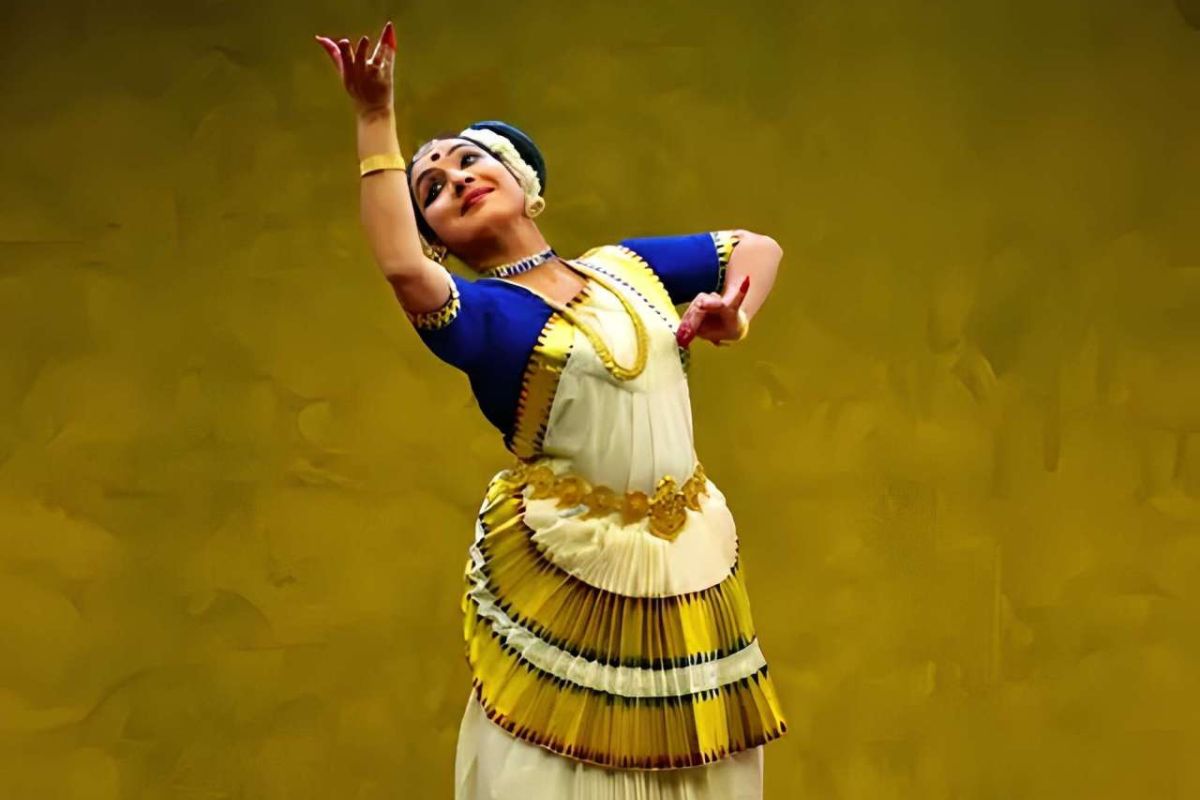
The traditional Mohiniyattam costume consists of an off-white or white saree with a gold border as an emblem of purity and simplicity. The dance performancers fix their hair into a bun while accessorizing it with jasmine blossoms and simple decorations unlike those present in other classical dance traditions.
Carnatic music functions as the musical accompaniment to Mohiniyattam and the songs primarily use verses from Malayalam and Sanskrit languages. The dance receives musical backing from the mridangam and veena and flute instruments that add a flowing graceful element to the performance.
Mohiniyattam went through phases of stagnation but received new life through the revival efforts of both King Swathi Thirunal during the 19th century together with poet Vallathol Narayana Menon in the 20th century. Today, institutions like Kerala Kalamandalam preserve this distinctive art form, which continues to be a treasured element of Kerala’s cultural heritage.
Ritual Art Forms of Kerala
Theyyam: The Dance of Gods
Theyyam emerged as an ancient ritual art form within the northern areas of Kerala where Kannur and Kasaragod districts stand. The name combines “Deivam” (god) and “Aattam” (dance), reflecting its sacred nature where performers are venerated as divine embodiments, creating profound spiritual experiences for all participants.
Each of the 400 variants of Theyyam honors different gods and forefathers. Performances occur in small shrines or sacred groves called “kaavu” during festivals and special occasions. Community members requested for performance must follow strict training protocols which include spiritual fasting along with meditation. Throughout the ritual performers elevate to divine status through which they provide blessings to people while responding to inquiries and settling disputes.
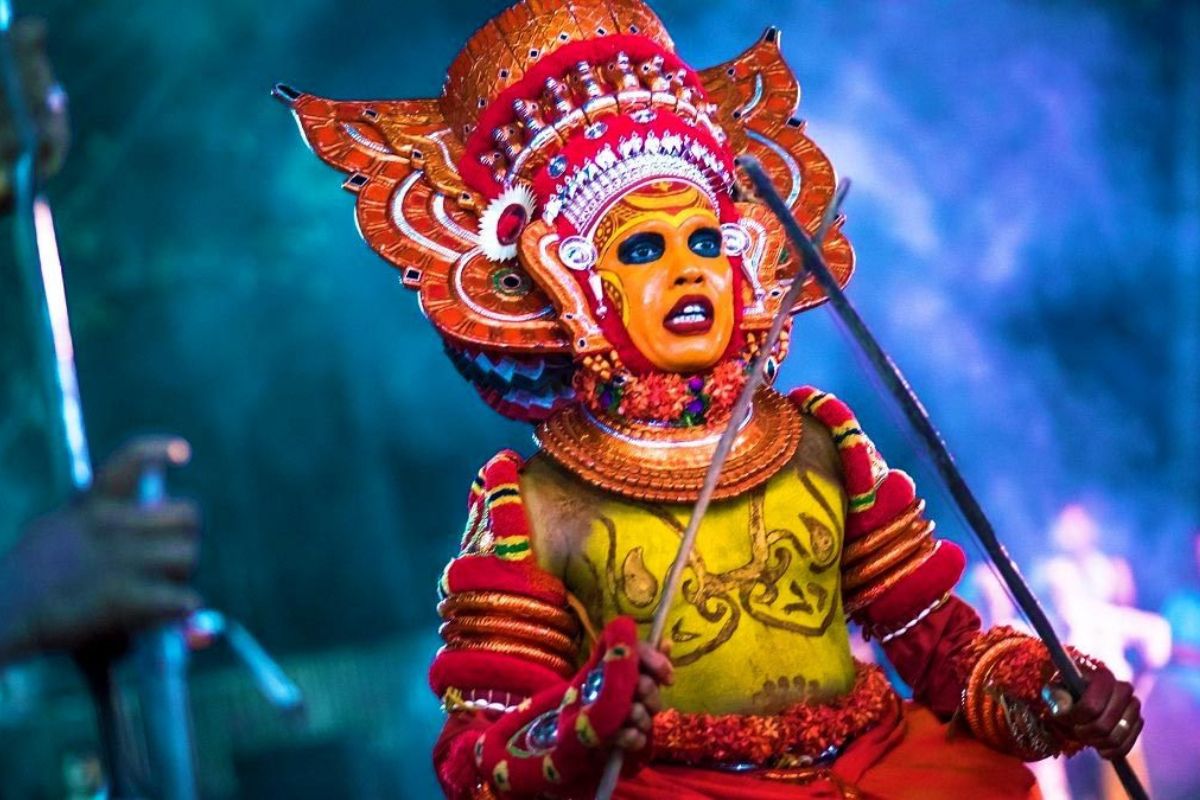
Performers dress in vibrant red and black clothes along with orange attire. The “mukhathezhuthu” (face painting) uses natural pigments specific to each deity, while impressive “mudi” headdresses—sometimes several feet tall—are crafted from bamboo, areca palm leaves, and colorful fabrics.
Drumlink starts off while the dancer makes their entrance onto the stage. The dance intensifies through movement and chanting to reach a hypnotic condition which signals the sacred divine intervention. Audience members watch with deep respect while trying to receive guidance and blessings.
At their core Theyyam creates a platform for both religious purposes and social problem resolution. This exceptional tradition survives today by having its authentic cultural value documented through research and promotion to maintain its traditional character.
Kalaripayattu: The Mother of Martial Arts
Kalaripayattu became famous in the third century BC in Kerala when the world recognized this art system as the first martial arts system leading to other combat forms. The name itself reveals its nature, combining “Kalari” (training ground) and “payattu” (combat), representing its holistic approach integrating physical prowess, mental discipline, and spiritual growth.
Training occurs in ritual Kalaris which feature below the ground sanctified space measuring 42 by 21 feet. The southwest corner houses the “poothara,” a seven-tiered platform symbolizing essential practitioner qualities. Students must follow religious rules before training starts to show respect for the spiritual essence that underlies martial arts.
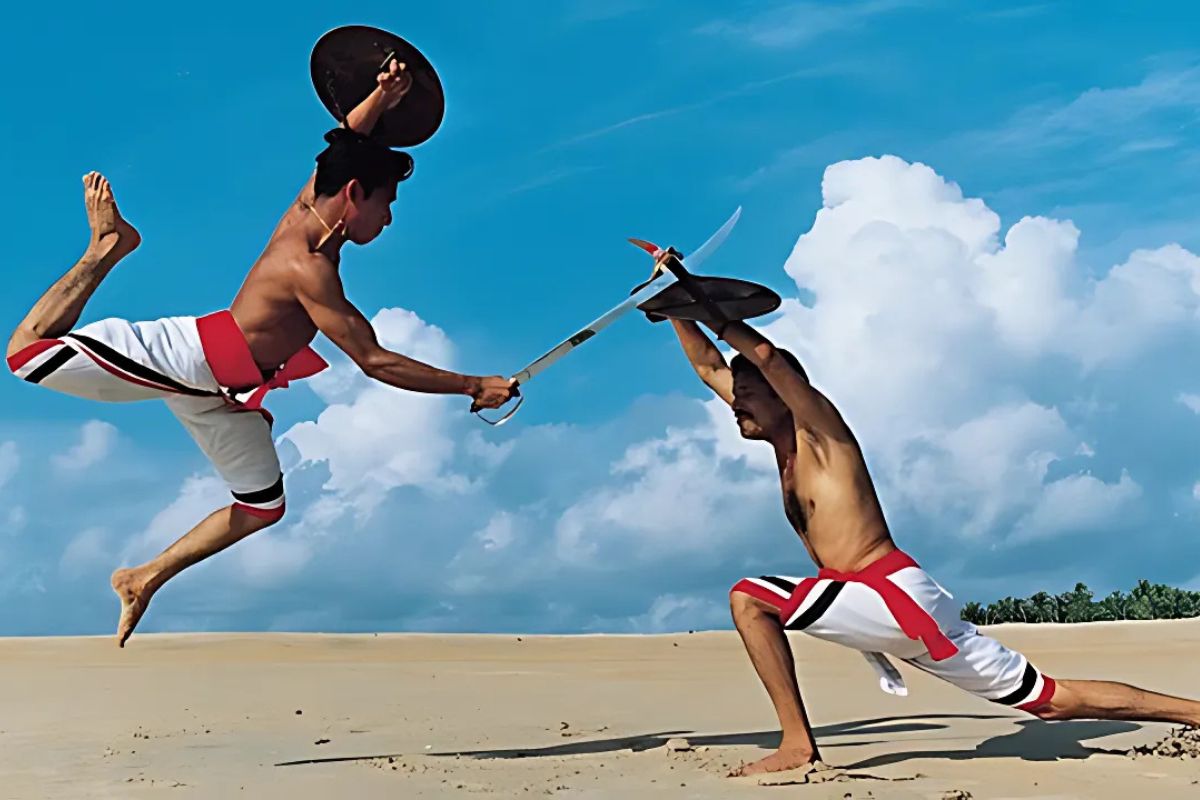
At age seven students receive therapeutic oil massages followed by conditioning exercises which establish flexibility and strength as well as agility abilities. Training progresses from empty-handed combat to weapons mastery including sticks, daggers, swords, and the unique flexible “Urumi” sword. The fighting techniques derive their moves from the natural motion of seven animals—lion, tiger, elephant, wild boar, snake and crocodile.
Traditional medicine distinguishes Kalaripayattu by integrating with it. Advanced practitioners study “marma” (vital body points) and “chikitsa” (healing techniques), creating a balanced system of combat and healing arts.
The warrior class of Kerala initially practiced Kalaripayattu in the 11th century regional conflicts until British colonials banned its practice. The revival of Kalaripayattu during the late 20th century led to international recognition due to its military importance and medical advantages and historical relevance so these traits receive ongoing preservation support through technical standardization programs.
Mural Paintings: The Wall Art of Kerala
Mural paintings maintain their place as a prestigious art tradition throughout Kerala by decorating temples along with palaces since the 15th century. These works feature vibrant colors, intricate details, and distinctive techniques reflecting the region’s cultural heritage.
Traditional artists use established natural material application methods in their artistic work. Natural pigments including cinnabar, orpiment and indigo, ochre in combination with lime and carbon and saffron are mixed with tree gum binders and artists use handmade bamboo and coconut fiber brushes for application.
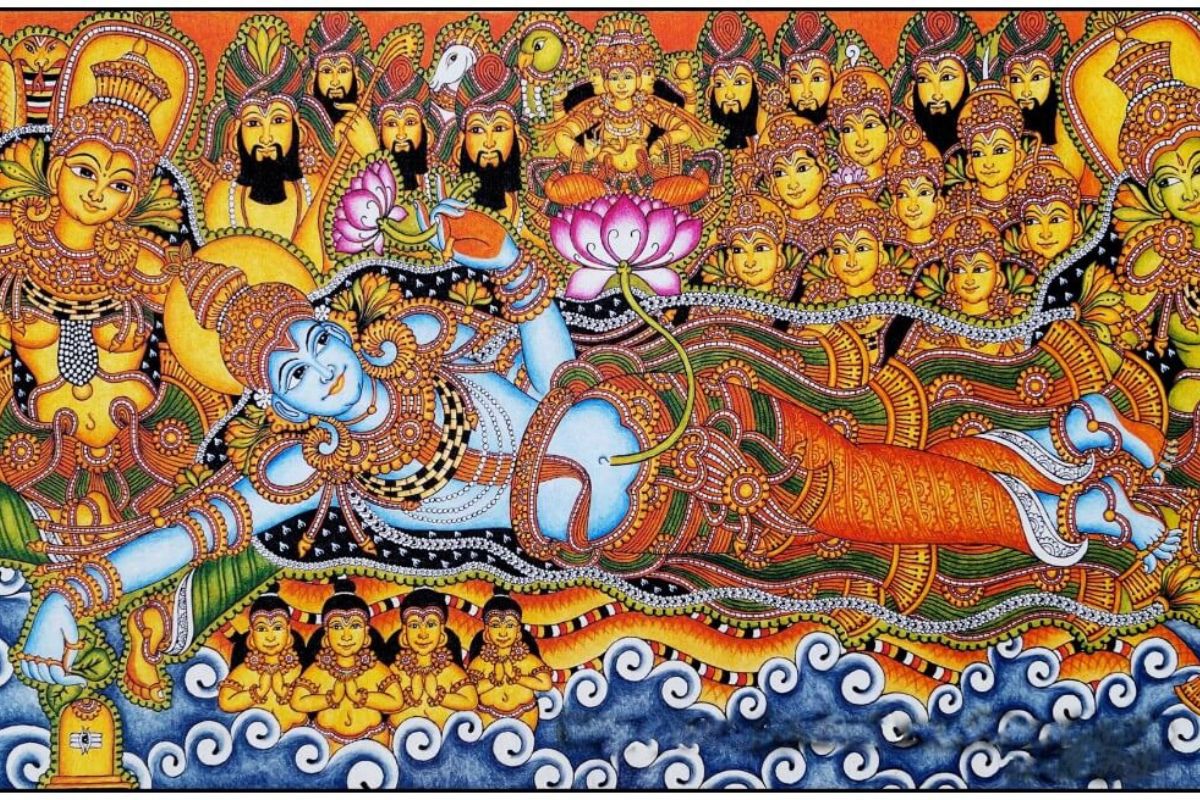
Religious mythology from Hindu scriptures serves as the basis for theme selection since it portrays narrative excerpts from Ramayana and Bhagavata Purana. Artist depictions display angular eyes and curved noses and emotional body positions throughout their structured artwork arrangements.
Notable mural sites include Krishnapuram Palace housing “Gajendra Moksha,” Kerala’s largest mural panel; Mattancherry Palace with extensive Ramayana scenes; and Shiva Temple at Ettumanoor showcasing early Dravidian artistry.
Contemporary artists have modified the traditional wall-based lime plastering techniques by using them to paint on both canvas and paper. The art institution Kerala Lalithakala Akademi protects traditional artistic methods as they progress the field.
The murals depict historical myths and traditions of diverse times by visualizing them as wall art. Modern difficulties make way for traditional murals to become a source of inspiration for contemporary artists through conservation activities and modern design integration.
Musical Traditions and Instruments of Kerala
The musical traditions of Kerala extend from classic Carnatic music to many diverse folk musical genres which depend on four categories of traditional instruments.
“Thatham” (string instruments) includes the Nanthuni, a single-stringed folk instrument producing melancholic tones, and the Pulluva Veena, played with a bow during serpent worship rituals, featuring a jackfruit wood body with steel strings.
“Vithatham” (percussion instruments) provides the rhythmic foundation of Kerala’s performances. During temple festivals along with performance arts the cylindrical Chenda instrument generates strong musical sounds that remain essential. Apart from the barrel-shaped Madhalam percussion instruments also include the copper Mizhavu along with the hourglass-shaped Idakka and smaller Udukku and tribal Thudi.
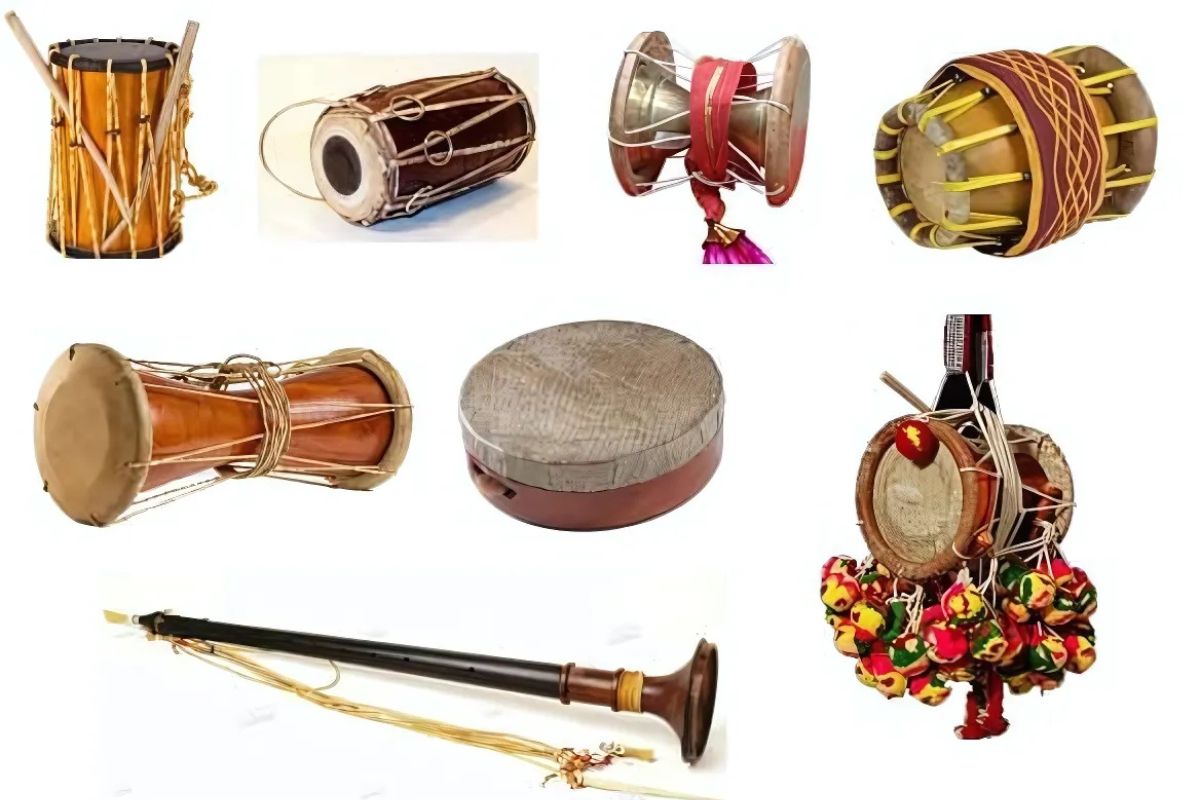
“Khanam” (metal instruments) add textural elements and rhythmic emphasis through Ilathalam (cymbals), Mani (bells), Chengila (gongs), Kuzithalam (small cymbals), and Panankinnom, marking significant musical moments.
“Sushiram” (wind instruments) contribute melodic elements through the Kombu (curved metal horn), Kuzhal (double-reed instrument), and Pullamkuzhal (bamboo flute).
The Villu serves as a special bow instrument for folk music performances and the Chandravalayam offers distorted sound for presenting Ramayana narrative musical forms.
These instruments collectively form the sonic foundation of Kerala’s musical traditions, preserving and expressing the state’s rich cultural heritage through distinctive sounds and rhythms.
Other Ritual Art Forms of Kerala
The cultural heritage of Kerala includes many ritual art forms which developed throughout centuries and still maintain their significance for regional traditions. These cultural performances namely Patayani in addition to Theeyattu together with Tholppavakkoothu and Poothan and Thira maintain their significance as festival elements all across the region.
Patayani stands as one of Kerala’s ancient ritual art forms while mostly taking place in central Kerala. This masked dance tradition features elaborate “Kolams” (masks) representing various deities. Patayani dancers perform their ceremonies under the protection of Bhadrakali as they battle evil entities by moving energetically to drum and cymbal music. The event unites communities during Patayani not only because of its religious role but also to enhance cultural connections between people.
Ritual together with music music dance painting and theater functions as a complete artistic system in Theeyattu. The performer creates a “kalam” (floor drawing) of the invoked deity using colored powders, then embodies the deity through dance before ritually erasing the drawing—symbolizing life’s impermanence. Theeyattu which occurs primarily in Bhagavati temples represents an important show of religious devotion to believers.
Tholppavakkoothu represents shadow puppetry where expert puppeteers operate detailed leather figures by holding them behind a glowing lantern screen. Skilled puppeteers both talk and sing through the performance of stories that focus on Ramayana stories. The religious events take place throughout several consecutive nights at Bhagavati temples. Modern entertainment does not deter preservationists from adopting this art form into contemporary formats with shortened performance times.
The dancing effective stage performers demonstrate the fight between magical good and wicked forces in this theatrical spectacle. In this performance Poothan plays the role of Lord Shiva to triumph over Thira who takes the part of Goddess Kali thus restoring balance. During the performance actors display ornate masks together with costumes while using percussion instruments which help generate sacred atmospheres with intense spiritual qualities. Poothan commonly wears black or white clothing but Thira selects bright costumes.
Also Read: The Diverse Artistic Heritage of Uttar Pradesh: Journey Through Its Unique Art Forms
You can connect with DNN24 on Facebook, Twitter, and Instagram and subscribe to our YouTube channel.

